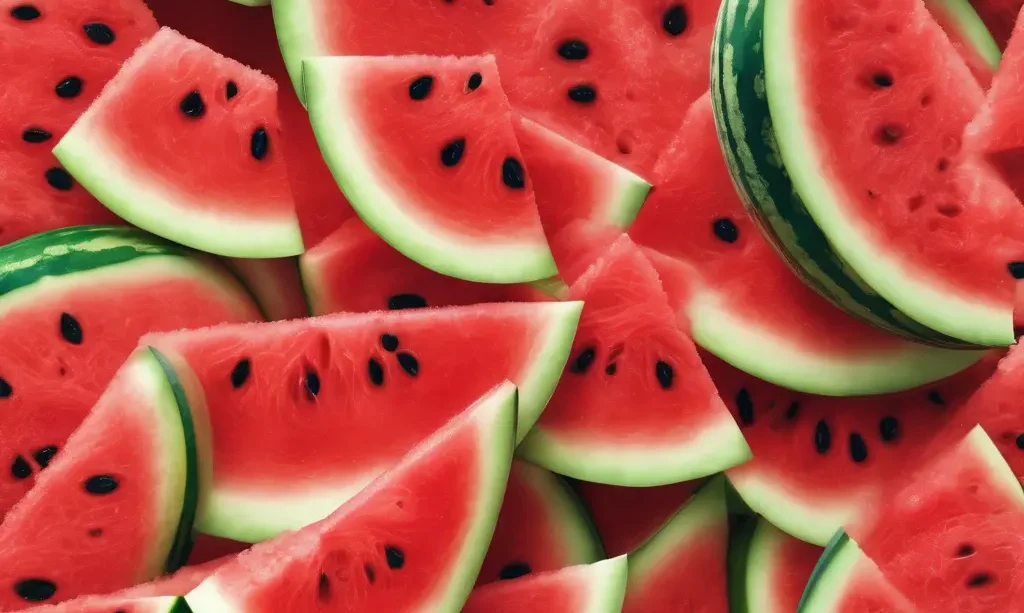Sugar Baby watermelons, cherished for their sweet flavor and compact size, are a popular choice among gardeners and fruit lovers alike. Originating as a cultivated variety designed for smaller gardens and quicker harvests, Sugar Baby watermelons embody the quintessential summer treat without the space requirements of traditional watermelon varieties. This article delves into the unique characteristics of Sugar Baby watermelons, from their physical attributes to their growth habits, offering insights into how to maximize their size and enjoy their delicious bounty.
Characteristics of Sugar Baby Watermelons
Sugar Baby watermelons are known for their dark green, almost black rind, and deep red, juicy flesh. Typically, a mature Sugar Baby watermelon is round and compact, measuring about 8 to 10 inches in diameter and weighing between 8 to 10 pounds. This variety stands out for its fine-grained, sweet flesh, making it a favored choice for those seeking a refreshing and flavorful watermelon experience. Its smaller size compared to other watermelon varieties, such as the Crimson Sweet or Charleston Gray, makes it particularly appealing for home gardeners with limited space.
Growth Habits of Sugar Baby Watermelons
The journey of a Sugar Baby watermelon from seed to fruit is a fascinating process that begins with planting in warm, well-draining soil after the last frost of spring. These melons thrive in full sunlight and require consistent moisture throughout their growth cycle, which spans approximately 75 to 80 days. Sugar Baby watermelons are vigorous climbers, spreading their vines across the garden bed. To accommodate their growth, gardeners should allocate ample space or consider using trellises to support the vines and conserve garden real estate.
Optimal Growth Conditions
For Sugar Baby watermelons to reach their full potential, they demand warm temperatures and an extended period of sunshine. The ideal soil temperature for planting is around 70°F, which encourages germination and root development. Regular watering, especially during the fruit setting and growing phases, is crucial to prevent stress and ensure the development of juicy, flavorful melons. Additionally, a balanced fertilization regime can provide the necessary nutrients for vigorous growth and optimal fruit production.
Size Expectations for Sugar Baby Watermelons
On average, Sugar Baby watermelons attain a diameter of 8 to 10 inches and a weight of 8 to 10 pounds at maturity. However, the ultimate size of the fruit can vary based on several factors, including the care provided during the growing season, the richness of the soil, and the amount of sunlight received. Achieving the ideal size for Sugar Baby watermelons requires attention to detail and adherence to best practices in melon cultivation, which include proper spacing, timely watering, and effective pest and disease management.
Cultivation Tips to Maximize Size
Growing Sugar Baby watermelons to their full potential involves more than just planting seeds and waiting for harvest. Here are some cultivation tips that can help maximize the size and sweetness of the fruit:
- Planting and Spacing: To allow for adequate growth, Sugar Baby watermelon seeds should be planted in hills or mounds, with two to three seeds per mound. Once seedlings emerge and grow a few inches tall, thin them out, leaving only the strongest plant in each mound. Proper spacing between the mounds, typically 3 to 4 feet apart, is crucial to give each plant enough room to spread and access nutrients and water.
- Watering Strategy: Consistent watering is key to growing juicy watermelons. Water Sugar Baby plants deeply once a week, providing 1 to 2 inches of water. Avoid overhead watering to reduce the risk of leaf diseases. As fruits mature, you can reduce watering to concentrate the sugars in the fruit, but never allow the soil to dry out completely.
- Fertilization: A balanced fertilizer applied at planting and again as vines begin to spread can support healthy growth. Use a lower nitrogen mix to encourage more female flowers, which produce fruit, and to prevent excessive foliage growth.
- Pollination: Sugar Baby watermelons rely on bees for pollination. To enhance pollination, consider planting flowers nearby to attract more bees to your garden. Hand pollination is also an option if bee activity is low, using a small paintbrush to transfer pollen from male to female flowers.
Common Challenges in Growing Sugar Baby Watermelons
Even with the best care, gardeners may face challenges that can affect the size and quality of Sugar Baby watermelons:
- Pests and Diseases: Common pests such as cucumber beetles and vine borers, along with diseases like powdery mildew and fusarium wilt, can threaten Sugar Baby watermelons. Implementing integrated pest management strategies, such as using floating row covers and practicing crop rotation, can help manage these issues.
- Environmental Challenges: Extreme temperatures, either too hot or too cold, can affect pollination and fruit development. Providing shade during the hottest part of the day and using black plastic mulch to warm the soil in cooler regions can help mitigate temperature extremes.
- Nutrient Imbalances: Over-fertilization, especially with nitrogen, can lead to lush vine growth at the expense of fruit development. Ensuring a balanced nutrient supply is essential for optimal fruit size and taste.
Harvesting Sugar Baby Watermelons
Knowing when to harvest is crucial for enjoying Sugar Baby watermelons at their peak flavor. Look for several signs that indicate maturity:
- Change in Tendril Color: The tendril closest to the fruit will turn brown and dry up when the watermelon is ripe.
- Thumping Test: A ripe Sugar Baby watermelon will produce a hollow sound when thumped.
- Bottom Color: The underside of the watermelon, where it rests on the ground, will turn from light green to a yellowish color when it’s ready to harvest.
Use a sharp knife or garden shears to cut the watermelon from the vine, leaving a few inches of stem attached to prevent the fruit from spoiling quickly.
Post-Harvest Care and Storage
After the excitement of harvesting, proper post-harvest care and storage are crucial to maintain the freshness and flavor of Sugar Baby watermelons. Here are some tips to ensure your watermelons remain in the best condition after picking:
- Immediate Cooling: If possible, cool the harvested watermelons as soon as you can. This helps to reduce respiration rates and prolongs their shelf life. A quick rinse under cool water can also help remove any field heat.
- Proper Storage: Store Sugar Baby watermelons in a cool, well-ventilated area. They are best kept at temperatures between 50°F and 60°F. Avoid storing them below 50°F as cold temperatures can cause the flesh to become mealy and unpalatable.
- Humidity Considerations: Maintain a relative humidity around 75% to 80% during storage. This level of humidity helps prevent the watermelons from losing moisture and becoming dry.
- Handling: Handle watermelons with care to avoid bruising. Even small bruises can develop into spoilage spots during storage.
- Shelf Life: When stored properly, Sugar Baby watermelons can last up to two weeks. Once cut, wrap the watermelon in plastic wrap or store it in an airtight container in the refrigerator to extend its freshness for a few more days.
Tips for Cutting, Serving, and Preserving
Enjoying Sugar Baby watermelons at their peak requires proper cutting and serving techniques. Additionally, preserving the watermelon can extend its usability beyond the fresh consumption period:
- Cutting: Use a sharp knife to cut the watermelon into slices, cubes, or scoops, depending on your preference. A clean cut helps preserve the remaining watermelon’s freshness when stored.
- Serving: Serve Sugar Baby watermelon slices chilled for a refreshing treat. They can also be added to salads, smoothies, or desserts for a sweet, hydrating element.
- Preserving: To preserve watermelon beyond its fresh state, consider freezing cubes or pureeing the flesh to use in drinks. Watermelon rind can also be pickled or candied, offering a zero-waste approach to enjoying this fruit.
Conclusion
Sugar Baby watermelons, with their compact size and sweet, juicy flesh, are a delightful addition to any garden. By understanding the specific needs of these melons from planting to harvest, gardeners can maximize their size and yield. Addressing common challenges with informed strategies ensures healthy growth throughout the season. Finally, proper post-harvest care, coupled with creative serving and preserving methods, allows you to extend the enjoyment of Sugar Baby watermelons, making every effort in the garden well worth it. Whether enjoyed fresh on a hot summer day or incorporated into various culinary creations, Sugar Baby watermelons epitomize the joy and abundance of home gardening.



